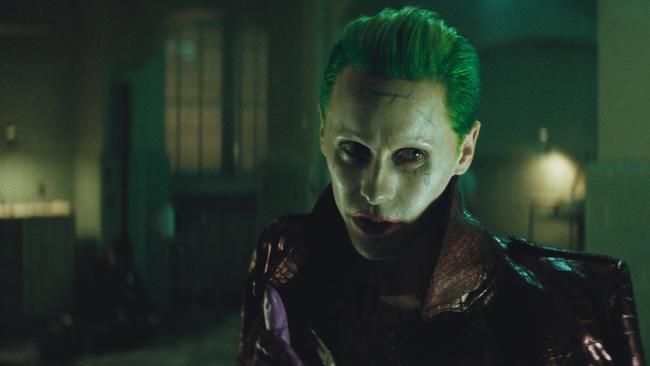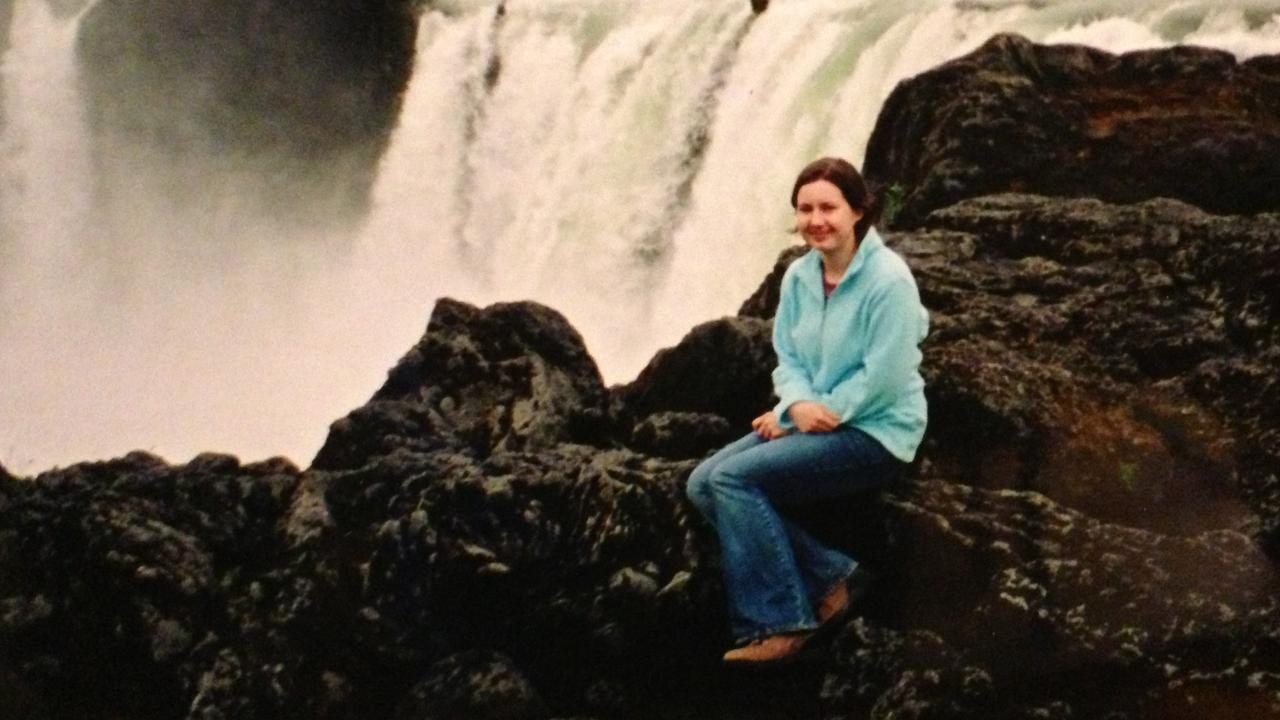Method acting: from Brando to Leto, stars go to extremes
It’s hailed as a powerful performance tool, but could some actors being taking the technique too far?

Spencer Tracy, one of the most natural actors to have stepped in front of a camera, gave three pieces of advice to every young hopeful who asked for his secret: “Show up on time, know your lines, and don’t bump into the furniture.” Sometimes he’d throw in a fourth, which outlined what he saw as the proper relationship between the audience and the film actor’s craft: “Never let them catch you at it.”
Tracy died in 1967, though his words still bear repeating today, ideally through a megaphone outside Jared Leto’s trailer. In preparing to play Batman’s nemesis the Joker in the forthcoming comic-book movie Suicide Squad, Leto got himself into character partly through a series of in-character stunts, which were described as part and parcel of the 44-year-old Oscar winner’s method acting approach.
One involved sending cast members sex toys, used prophylactics and pornographic magazines flecked with what was hopefully glue. Leto required the crew to address him as Mr J during the shoot — J for Joker rather than Jared — while after hours he tormented the actor playing his henchman with phone calls throughout the night.
In Tracy’s day, some studios probably would have turned to the Mob to hush up this kind of stuff. But now it’s a point of pride — a kind of off-screen validation of Leto’s commitment to his art. It’s the same reason The Revenant’s promotional campaign made so much of its cast’s arctic ordeal, and Shia LaBeouf talked about turning up drunk to play a moonshine distiller in Lawless, dropping acid for the drug-infused The Necessary Death of Charlie Countryman, and pulling his tooth out to play a World War II tank gunner in Fury.
More than ever, we seem to want to catch actors “at it” — and in return, they seem increasingly keen to be caught. Take the 16 best actor Oscars that have been awarded since 2000. (For women, things are different, as we’ll discover in a while.) Nine went to actors whose winning approaches were widely characterised as method acting.
Matthew McConaughey (2014, Dallas Buyers Club) lost 20kg. Jamie Foxx (2005, Ray) glued his eyelids shut. Adrien Brody (2003, The Pianist) sold his house and car and moved to Europe, then went on a crash diet and took four hours of piano lessons a day. Forest Whitaker (2007, The Last King of Scotland) learned to speak Kiswahili, play the accordion and spent more than three months in Uganda. Eddie Redmayne (2015, The Theory of Everything) studied Stephen Hawking’s writings for four months and interviewed about 30 patients in a neurology clinic.
There’s always a lot of talk about actors disappearing into roles, but in situations like these, that’s not what’s actually happening at all. Instead, what ends up on screen is a kind of actor-character hybrid, and the hard labour of bringing the role to life becomes part of the reason — sometimes even the main one, in fact — we want to watch.
One problem with the new craze for method acting is it has almost nothing to do with real method acting in the slightest, which was adapted from the teachings of Russian theatre director Konstantin Stanislavsky by the American acting coach Lee Strasberg in the 1930s.
Stanislavsky had no interest in film acting — he likened it to chopping wood — but Strasberg had caught the Moscow Arts Theatre’s Stanislavski-directed 1923 tour of the US, and was stunned by his players’ subtle intensity and control. It looked nothing like cinema, where performances (still silent at this stage) were rooted in the hyper-expressive traditions of melodrama and vaudeville.
But it was also far removed from the precision and grace of Western stage acting, which was heavily influenced by British theatre. In the time it took Strasberg to develop his method, another style of acting came and went: the briskness and breeziness of golden-age Hollywood, where actors’ characters tended to fit with a continuous screen persona. But after World War II, the public mood was grey and uncertain. Strasberg’s method — which by this point had become his Method — put those neuroses on screen.
To see method acting saunter into cinema in real time, watch Marlon Brando’s entrance in A Streetcar Named Desire. Brando was the first of the Strasberg set after John Garfield and Montgomery Clift to make it big in Hollywood. Vivien Leigh, Brando’s co-star, was a classical actress — and she gives the film’s faded heroine, Blanche, a certain poise even when she’s flustered that feels like an invisible acknowledgment of the camera’s presence. Brando’s Stanley Kowalski, on the other hand, seems not to even know it’s there.
After their first exchange, Brando walks forwards so close to the camera you think he’s going to knock it over, while idly scratching a pectoral muscle.
In the next shot, he itches his back with his thumb, then wanders to the sideboard and grabs a bottle of bourbon, before mumbling something that sounds a bit like, “Man, liquor goes fast in the hot weather”. The cumulative effect is a casual intensity you can’t take your eyes off — and he breaks two of Tracy’s three rules in his opening scene.
Brando, Clift, Warren Beatty and Robert De Niro were trained by Strasberg rival Stella Adler, while Strasberg’s students included James Dean, Al Pacino, Jack Nicholson and Dustin Hoffman, whose method approach during the making of Kramer vs Kramer was flatly sadistic. Between takes, he’d goad his more technical co-star, Meryl Streep, about the recent death of her real-life lover, John Cazale, from lung cancer, and before one crucial scene he slapped her across the face.
There were a few method actresses — Julie Harris, James Dean’s co-star in East of Eden, was one — but the style overwhelmingly lent itself to stories about masculinity under threat, where a character’s macho exterior masks some kind of subcutaneous torment. (Brando’s ex-boxer grappling with his conscience in Kazan’s On the Waterfront might be the archetypal method role.) That’s why method acting is a predominantly male gig, and also why you never find method acting in comedy. If you’ve ever wondered why Hollywood has seemed to hold drama and male acting in a far higher regard than comedy and female acting since the 50s, it’s largely method’s fault — and it might take method’s downfall to restore both actresses and comedies to their pre-war standing.
In an interview for the 1961 book Actors Talk About Acting, Leigh expressed bemusement at the method craze. “They never seem to do any comedies at Lee Strasberg’s school,” she said, “whereas comedy is much more difficult than tragedy, and a much better training, I think ... It’s much easier to make people cry than to make them laugh.”
For his part, Strasberg didn’t think he’d come up with anything new: he’d just given a name to the technique actors had always used, mostly unconsciously, to produce their best work.
In third century BC Athens, a celebrated tragic actor called Polus carried an urn of his dead son’s ashes on stage to play the mourning Electra. His performance, wrote the Roman scholar Gellius, “filled the whole place not with the appearance and imitation of sorrow, but with genuine grief and unfeigned lamentation.”
Crucially, as Gellius later points out, the Athenians had no idea what was actually in Polus’s urn — which is also how Daniel Day-Lewis likes it. Of the nine supposedly method-based recent Oscar-winning performances mentioned above, Day-Lewis gave two. And while his extensive off-screen preparations are legendary — and do seem to yield tangible on-screen results — he rarely discusses them, and then only with reluctance.
His performance as oil baron Daniel Plainview in There Will be Blood (which won in 2008) was built on extensive research of turn-of-the-century prospecting culture, and voice recordings of those who participated in it. He also contracted pneumonia during Gangs of New York, lived off the land for The Last of the Mohicans, and never left his wheelchair while playing the cerebral palsy-stricken artist Christy Brown in My Left Foot, the role for which he won his first Oscar. (Dedication like that puts sending condoms to your co-stars into perspective.)
Whether method acting’s reputation can survive the like of Leto’s antics remains to be seen — although if it doesn’t, that might come as some relief. Let’s not forget how delightful the alternative can be: actors like Tom Hanks, George Clooney, Matt Damon, Robert Downey Jr and Channing Tatum are watchable in ways that method’s madness could never account for.
A great screen persona is its own kind of dramatic truth — and unlike even the best Brando mumble, it’s an act you can’t be caught in.
The Telegraph



To join the conversation, please log in. Don't have an account? Register
Join the conversation, you are commenting as Logout